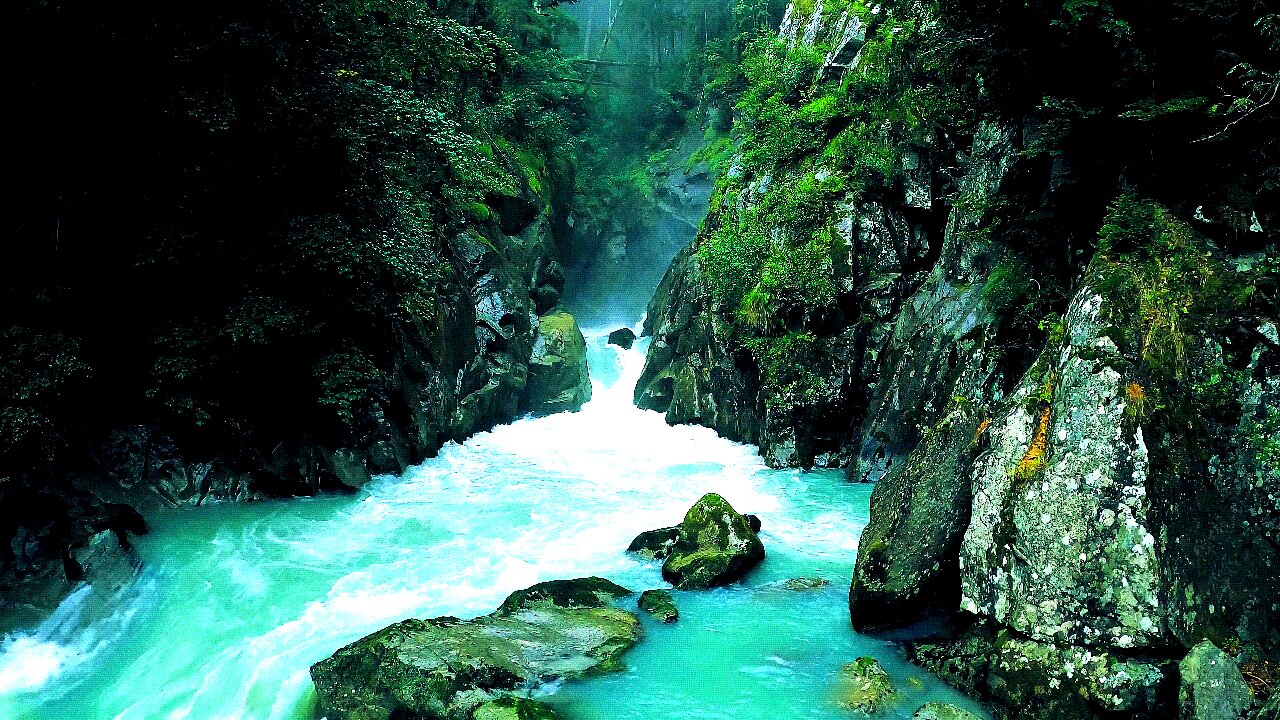Premium Only Content

The Effortless cascade streams mysteriously spouting over the stones
The waterfall is stunningly beautiful like aquatic blue as it flows gracefully downstream. A waterfall is a river or other body of water's steep fall over a rocky ledge into a plunge pool below. Waterfalls are also called cascades.
The process of erosion, the wearing away of earth, plays an important part in the formation of waterfalls. Waterfalls themselves also contribute to erosion.
Often, waterfalls form as streams flow from soft rock to hard rock. This happens both laterally (as a stream flows across the earth) and vertically (as the stream drops in a waterfall). In both cases, the soft rock erodes, leaving a hard ledge over which the stream falls.
A fall line is the imaginary line along which parallel rivers plunge as they flow from uplands to lowlands. Many waterfalls in an area help geologists and hydrologists determine a region's fall line and underlying rock structure.
As a stream flows, it carries sediment. The sediment can be microscopic silt, pebbles, or even boulders. Sediment can erode stream beds made of soft rock, such as sandstone or limestone. Eventually, the stream's channel cuts so deep into the stream bed that only a harder rock, such as granite, remains. Waterfalls develop as these granite formations form cliffs and ledges.
A stream's velocity increases as it nears a waterfall, increasing the amount of erosion taking place. The movement of water at the top of a waterfall can erode rocks to be very flat and smooth. Rushing water and sediment topple over the waterfall, eroding the plunge pool at the base. The crashing flow of the water may also create powerful whirlpools that erode the rock of the plunge pool beneath them.
The resulting erosion at the base of a waterfall can be very dramatic, and cause the waterfall to "recede." The area behind the waterfall is worn away, creating a hollow, cave-like structure called a "rock shelter." Eventually, the rocky ledge (called the outcropping) may tumble down, sending boulders into the stream bed and plunge pool below. This causes the waterfall to "recede" many meters upstream. The waterfall erosion process starts again, breaking down the boulders of the former outcropping.
Erosion is just one process that can form waterfalls. A waterfall may form across a fault, or crack in the Earth’s surface. An earthquake, landslide, glacier, or volcano may also disrupt stream beds and help create waterfalls.
-
 1:37
1:37
Expert Videos Magnetic Media
4 years agoDolphin kisses a little girl and brings her a gift
65844 -
 2:21
2:21
Gozwaldi
4 years agoPiano Music: cascade
12 -
 LIVE
LIVE
The Chris Salcedo Show
12 hours agoRemembering Rush On A Truly American Holiday
572 watching -
 36:24
36:24
Julie Green Ministries
3 hours agoLIVE WITH JULIE
56.3K152 -
 1:05:27
1:05:27
Crypto Power Hour
11 hours ago $5.94 earnedWhat You Need To Know About Gold Tokenization
42.4K7 -
 1:46:14
1:46:14
LIVE WITH CHRIS'WORLD
11 hours agoTHE WAKE UP CALL - 11/26/2025 - Episode 14
15.8K2 -
 2:16:19
2:16:19
The Bold Lib
14 hours agoBOLDCHAT: Trump Pardons | DOGE | Patel w/ANGELA BELCAMINO
24.8K6 -
 47:14
47:14
Brad Owen Poker
23 hours ago $1.70 earnedI Have STRAIGHT FLUSH vs Flopped NUTS!! ALL IN w GOLD BRACELET LEGEND!! $15,000+! Poker Vlog EP 358
17.8K -
 36:11
36:11
Uncommon Sense In Current Times
18 hours ago $5.49 earnedThe Truth About the Abortion Pill | Sue Liebel Exposes FDA Failures & Hidden Dangers
32.8K2 -
 2:05:12
2:05:12
BEK TV
1 day agoTrent Loos in the Morning - 11/26/2025
19.7K